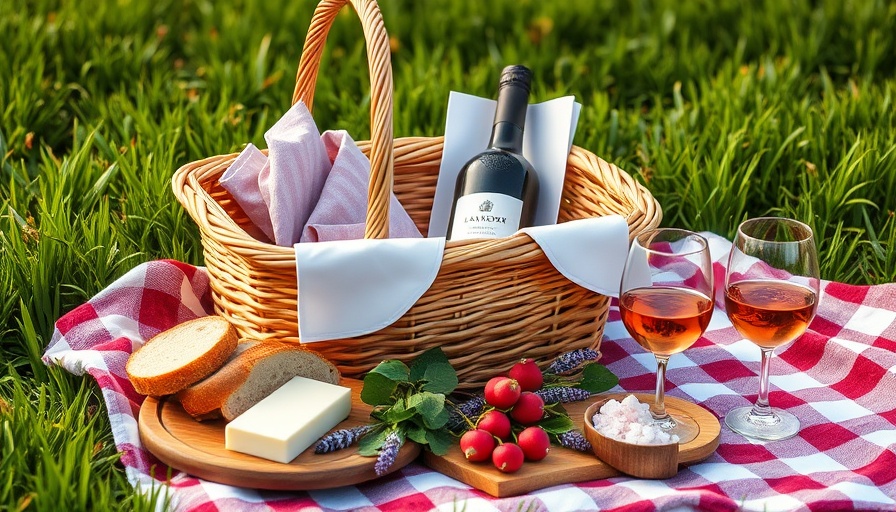
Transform Your Outdoors into Dreamy Spaces with Interior Design Techniques
As homeowners increasingly seek to create inviting outdoor spaces, the latest book Glorious Gardens by Dara Caponigro sheds light on a fascinating intersection between interior design and landscape architecture. Within its pages, we discover 21 extraordinary gardens meticulously crafted by renowned interior designers. These outdoor havens are not only visually stunning but also bear the signature styling of their creators, much like the interiors they expertly design. It's a rich exploration of how design principles can seamlessly transition from the home’s interior to the great outdoors.
A Natural Progression: Interior Design Extending Outdoors
Caponigro argues that the journey into gardening is a natural extension for anyone who cherishes interior design. The artistry of garden design is not merely an outdoor hobby; it’s a deepening of the designer’s vision, creating a cohesive aesthetic that flows from inside to outside. Caponigro adds, “Interior designers treat their gardens like an extension of the house,” which reveals how these professionals utilize their design philosophy in two realms.
Six Key Lessons from Glorious Gardens
By delving into Caponigro’s insights, we glean invaluable lessons on how to enhance our own outdoor spaces:
- 1. Define Garden Rooms: Much like an interior, gardens can benefit from distinct “rooms” defined by hedges, trellises, or natural boundaries. This structure makes large properties more manageable and visually engaging, creating distinct areas with unique atmospheres.
- 2. Harmonize with Architecture: A garden should complement the home and its architecture. Interior designers instinctively design gardens that reflect the architectural nuances of the home, maintaining a harmonious outdoor aesthetic.
- 3. Maximize Legibility: Simplistic designs can often resonate more effectively than complex ones. Legibility ensures that elements are easily understood at a glance, which is particularly effective in larger gardens.
- 4. Incorporate Local Flora: Using native plants not only enhances the beauty of the landscape but also promotes sustainability. Local plants are adapted to the environment and require less maintenance while supporting local ecology.
- 5. Utilize Color and Texture: Color palettes seen in interior spaces can translate powerfully outdoors. The careful selection of color and texture creates layered environments that entice and engage.
- 6. Foster Connection with Nature: Gardens should encourage homeowners to interact with nature, providing an escape and a sensory experience that holds both beauty and tranquility.
Embracing the Design Philosophy
Create a protective barrier with hedges or walls that segregate different zones in your garden. Each segment can serve a specific purpose, whether it’s a quiet reading nook, vegetable patch, or vibrant flower bed, much like the spaces within your home. Think about how you furnish each space: comfortable seating areas, well-placed paths, and vibrant plant life can create an inviting atmosphere for both relaxation and socializing.
Future Trends in Outdoor Design
The future of outdoor design is evolving, with emphasis on sustainability and eco-friendliness. Homeowners are climbing on board with the ethos of living in sync with nature, sporting gardens that reflect this philosophy. Landscape designers are adopting natural techniques, integrating edible gardens, and using native plants to further this initiative. As the trend toward creating usable outdoor spaces gathers momentum, we may see a greater focus on outdoor living rooms, complete with sofas, kitchens, and dining areas that mirror interior comforts.
Emotional Benefits of Thoughtful Garden Design
Gardening isn’t merely a hobby; it’s a therapeutic endeavor that fosters mental well-being. A beautifully curated outdoor space invites people to step outside, soak in the sunshine, and destress amidst greenery. This emotional connection to nature is paramount for promoting health and happiness.
Considerations for Homeowners
As you contemplate enhancing your outdoor spaces, think about the smaller details in your design process and how they can dramatically alter the experience of your garden. Seeking advice from professionals who specialize in both interiors and landscaping can also offer a wealth of knowledge and bespoke solutions tailored to your needs.
As you embark on your journey to a dream garden, remember that the only limit is your imagination. Utilize these insights to draw a direct line between your indoor aesthetic and outdoor aspirations—all while ensuring that your beautiful garden isn’t just pleasing to the eye but also serves as a sanctuary for your well-being.
Ready to explore your outdoor potential? Connect with ProHomeGuides for access to expert contractors who can help turn your vision into reality.
 Add Row
Add Row  Add
Add 






Write A Comment